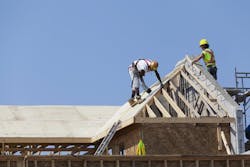How Builder Efficiency Can Address the Affordability Crisis
The affordable housing shortage is dragging down what would otherwise be a stellar start to a new decade for the housing industry. With labor shortages, material costs, and costly regulations to follow, the burden on builders to speed up production to meet demand is immense. But if they can increase efficiency to the levels of pre-2006, Roger Zalneraitis, economic development manager for the Southern Ute Indian Tribe, says that builders could meet demand without adding extra workers. Right now, we stand at an efficiency rate of 1.64 permits per worker in 2018. If builders can push to 2.1 new residential permits for every residential construction worker, they could add 400,000 new homes per year.
Housing affordability is an increasingly important issue around the world. In the United States, both the current and previous presidential administrations have highlighted the dilatory effects that local regulations have on housing prices, and several of the Democratic candidates have also issued housing plans to address the affordability crisis that many in the nation are facing.
It is imperative that housing supply meets or exceeds demand, otherwise prices will rise. The St. Louis Federal Reserve has data on household formation and new housing permits dating back to 1960. In three of the six decades since then, household formation exceeded new housing permits nationally. In those decades, home prices rose by an average of 3.5 percent per year. In the three decades when new housing permits exceeded household formation, home prices rose by less than 1 percent per year.
Since 2014, the United States has averaged 300,000 more household formations per year than residential permits issued, and as a result median home prices have increased 11 percent after inflation. While the number of residential construction workers has increased to over 800,000 in 2018, more housing is still needed. With the country nearing or at full employment, new construction workers may be difficult to find. Can the United States add to its housing stock without increasing the number of residential construction workers?
